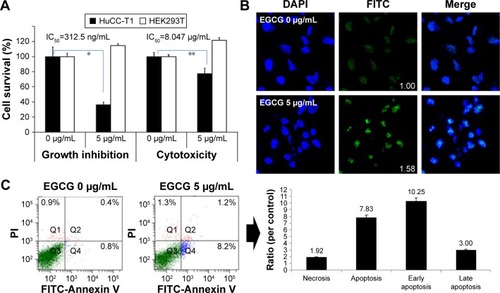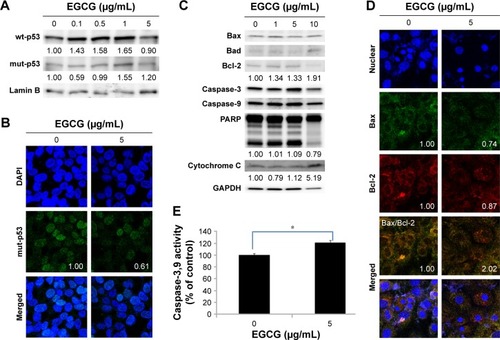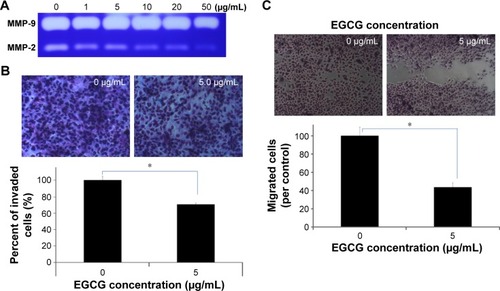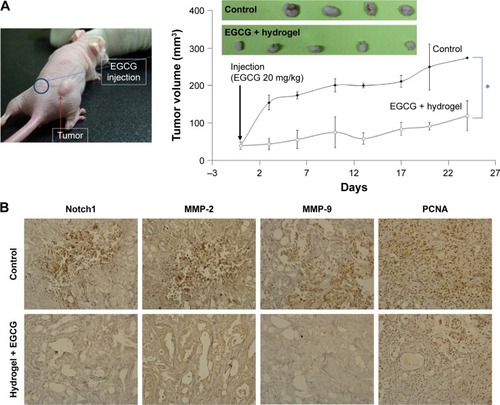Figures & data
Figure 1 The anticancer activities of EGCG against HuCC-T1 cells.
Abbreviations: IC50, half maximal inhibitory concentration; RPMI1640, Roswell Park Memorial Institute 1640; EGCG, epigallocatechin-3-gallate; FBS, fetal bovine serum; FITC, fluorescein isothiocyanate; HuCC-T1, human cholangiocellular carcinoma cell line; HEK 293T, human embryonic kidney 293 T; PI, propidium iodide; TUNEL, terminal deoxynucleotidyl transferase dUTP nick end labeling.

Figure 2 The apoptosis and necrosis of HuCC-T1 cells by treatment of EGCG.
Abbreviations: wt, wild-type; mut, mutant; EGCG, epigallocatechin-3-gallate; GAPDH, glyceraldehyde 3-phosphate dehydrogenase; HuCC-T1, human cholangiocellular carcinoma cell line, PARP, poly adenosine diphosphate ribose polymerase.

Figure 3 The effects of EGCG on the MMP activity, invasion and migration capacity of HuCC-T1 cells.
Abbreviations: EGCG, epigallocatechin-3-gallate; HuCC-T1, human cholangiocellular carcinoma cell line; MMP, matrix metalloproteinase.

Figure 4 Antitumor activities of EGCG against HuCC-T1 tumor xenograft mice model.
Abbreviations: EGCG, epigallocatechin-3-gallate; HuCC-T1, human cholangiocellular carcinoma cell line; MMP, matrix metalloproteinase; PCNA, proliferating cell nuclear antigen.

